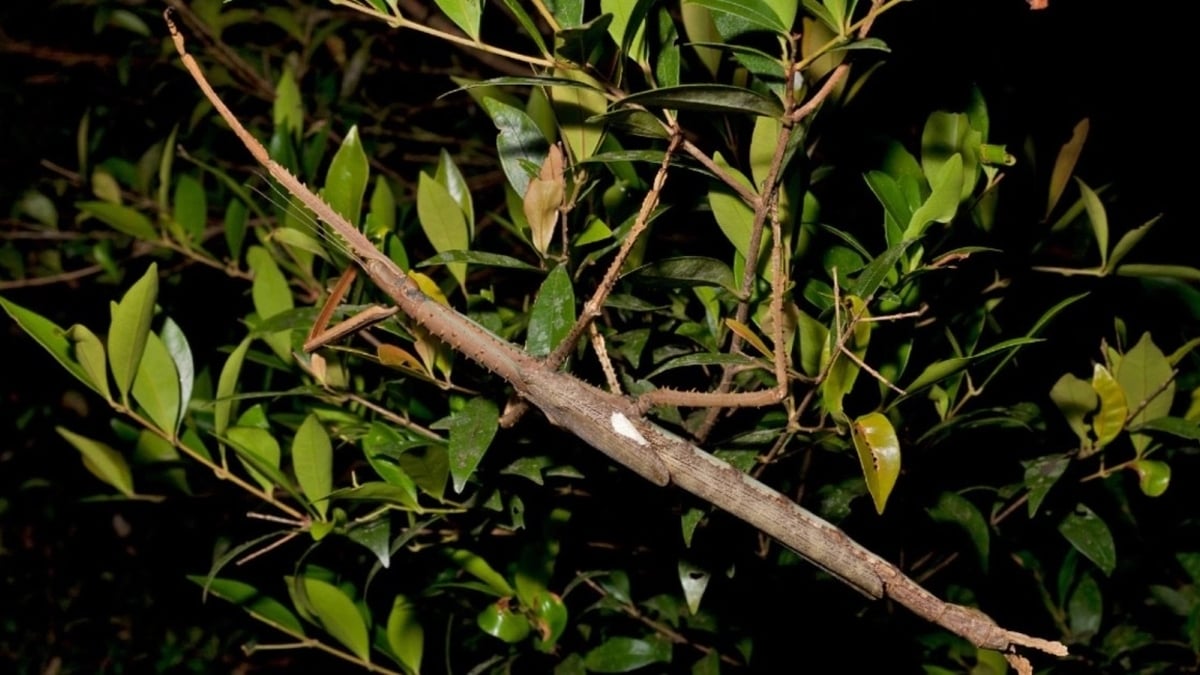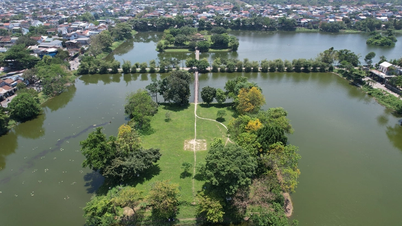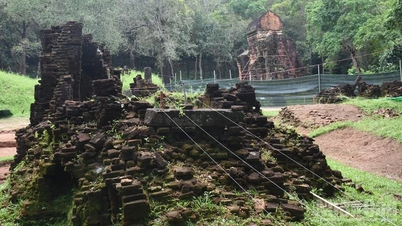
Reconstructed image of Ningchengopterus liuae (Photo: IE).
A pterosaur fossil with an estimated wingspan of up to 3.5 meters has been confirmed to represent an entirely new genus and species, marking the first pterosaur discovery in Japanese paleontological history.
The research results published by an international scientific team in the journal Cretaceous Research show that the new species, named Nipponopterus mifunensis, belongs to the family Azhdarchidae - a group of pterosaurs famous for the largest species that ever existed, such as Quetzalcoatlus.
The fossil, discovered on the island of Kyushu, consists of a well-preserved neck vertebrae. Detailed analysis revealed that the fossil had six neck vertebrae, a feature never previously recorded in any pterosaur.
In addition, many unique morphological features such as a raised dorsal ridge, deep neck groove, offset triangular bone cap, and laterally extended posterior process help researchers confirm that this is a completely new taxon in the global fossil record.
With an estimated wingspan of 2.7 to 3.5 meters, the new species is believed to have been capable of agile flight despite its large size, similar to other members of the family Azhdarchidae.
Using modern CT scanning technology and phylogenetic analysis at Kumamoto University, researchers determined that the fossil belongs to a group closely related to species in the subfamily Quetzalcoatlinae, which was previously known only from Mongolia and North America.
The specimen dates back about 90 million years, and lived during the Turonian–Coniacian stage of the late Cretaceous, a period extremely rich in dinosaur and flying species diversity.
According to the authors, Japan has had almost no clear pterosaur fossil records, so this discovery has special significance in filling the biogeographic gap of East Asia during the Late Cretaceous period.
The research is the result of collaboration between scientists from Shihezi University (China), São Paulo University (Brazil), Hokkaido University, Kumamoto University and the Mifune Dinosaur Museum (Japan).
The fossil specimen is currently on display at the Mifune Dinosaur Museum, Kumamoto Prefecture.
“This is clear evidence that science has no borders. We hope this discovery will open a new phase in paleontological research in Japan,” said Naoki Ikegami, one of the Japanese co-authors.
Source: https://dantri.com.vn/khoa-hoc/he-lo-quai-vat-bau-troi-co-dai-dau-tien-tai-nhat-cach-day-90-trieu-nam-20250610082156356.htm




























![[Photo] Nghe An: Provincial Road 543D seriously eroded due to floods](https://vphoto.vietnam.vn/thumb/1200x675/vietnam/resource/IMAGE/2025/8/5/5759d3837c26428799f6d929fa274493)





































































Comment (0)